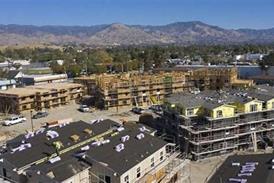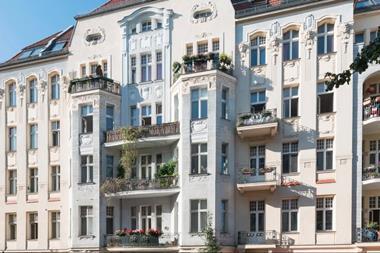Core US real estate returns have plateaued above 2% for four consecutive quarters, MSCI revealed today.
The latest quarterly results from the country’s $194bn (€172bn) open-ended fund sector is likely to provide more impetus for US pension funds seeking international and higher-return strategies.
The PREA/IPD US Quarterly Property Fund Index, which measures total returns among 35 open-ended funds, posted a 2.3% return for the second quarter this year, identical to that recorded for the previous three-month period.
While gross fund-level total returns remained constant throughout the two quarters, income rose from 1.12% to 1.14% in the second quarter while capital value growth declined from 1.12% to 1.15%.
The period between April and June is the fourth consecutive quarter of decreasing capital value growth, which stood at 2.75% this time last year.
Returns from direct real estate – factoring out the effects of leverage and fund management – were even lower during the second quarter at 2.13%, although this was slightly higher than the 1.99% record previously.
MSCI said the results reflected “the relative stability” of the market’s “primary underlying components”, but IPE Real Estate understands that US pension funds are increasingly looking for higher-return strategies to meet their objectives, either by employing higher-risk strategies domestically or by looking to less expensive markets outside the US.
This week, the Montana State Board of Investments discussed redeeming $18m from the core, open-ended JP Morgan Strategic Property Fund, while committing new capital to value-added and opportunistic strategies.
According to a board meeting document, the pension fund is considering investing $25m into GEM Realty Fund VI, an opportunistic fund focused on US apartments and offices.
It also plans to invest $20m into Velocis Fund II, which is employing a value-added strategy in secondary US markets. Velocis Advisors is seeking to raise $250m of equity and should have $920m of capital to invest when applying leverage.
Last week, IPE Real Estate reported that the California Public Employees Retirement System – which has been rebalancing its real estate porfolio in favour of core investments – is investing $250m in Asia-Pacific real estate markets via JP Morgan’s Asia-Pacific Property Fund.
According to Eric Adler, CEO of PGIM Real Estate, US pension funds have traditionally invested tactically and opportunistically in foreign real estate, but are now increasingly looking to diversify their long-term, core real estate exposure globally.
He told IPE Real Estate: “This idea of global diversification for the long term seems to be much more in the lexicon of the US investor than ever before.”
Perceptions that the market in the US has peaked could provide a catalyst for the trend, industry sources say.
Alistair Calvert, head of investments at Gramercy Property Europe, said US investors targeting secure, long-lease real estate had turned their attention to Europe in the face of high prices in the US.
Gramercy Property Europe follows a similar strategy in Europe to its parent Gramercy Property Trust, which invests in triple-net-lease properties in the US, popular with investors seeking low-risk, income-producing assets.
Calvert said he expected the net-lease market in Europe to grow in the coming years.
In the short-term, US investors might look to avoid the UK as the full ramifications of its vote to leave the European Union become clearer. Earlier this week, MSCI revealed that the UK market had experienced two months of decline in capital values and total returns.








![PGIM Real Estate [Homepage]](https://d15duu1h3gsd2d.cloudfront.net/Pictures/100x67fitpad[255]-90/P/Pictures/web/x/v/n/pgim_re_navylogo_335107.jpg)







No comments yet